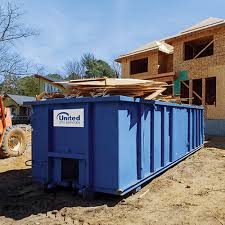Degenerative joint disease icd 10 code is one of the most common musculoskeletal disorders, affecting millions of people worldwide. Often used interchangeably with the term osteoarthritis, DJD is characterized by the gradual wearing down of cartilage in the joints, leading to stiffness, pain, and reduced mobility.
In medical practice, accurate coding of DJD using the ICD-10-CM (International Classification of Diseases, 10th Revision, Clinical Modification) system is essential for documentation, treatment planning, insurance billing, and public health research. This article explores what DJD is, how it is classified in ICD-10, and why proper coding is so important for both healthcare providers and patients.
What is Degenerative Joint Disease?
Degenerative joint disease icd 10 code occurs when the protective cartilage that cushions the ends of bones deteriorates over time. Without this cushioning, bones rub against each other, causing pain, swelling, and difficulty moving.
Common Symptoms of DJD
- Persistent joint pain (worsening with activity)
- Stiffness, especially after periods of rest
- Swelling around the joint
- Loss of flexibility or limited range of motion
- Grating or cracking sensation when moving the joint
Most Commonly Affected Joints
- Knees
- Hips
- Spine (cervical and lumbar regions)
- Shoulders
- Hands and fingers
Why ICD-10 Coding Matters
The ICD-10 system provides a universal coding standard for medical diagnoses. For DJD, proper coding is important because it:
Ensures Accurate Diagnosis – Identifies the type, location, and severity of the disease.
Supports Insurance Billing – Guarantees that treatment, procedures, and medications are reimbursed correctly.
Improves Research and Data Tracking – Allows healthcare organizations to study disease patterns and outcomes.
Enhances Patient Care – Provides detailed documentation that guides physicians in making treatment decisions.
ICD-10 Codes for Degenerative Joint Disease
In ICD-10-CM, degenerative joint disease is generally coded under the M15–M19 block for Osteoarthritis. Although the term “DJD” is used by many clinicians, ICD-10 officially categorizes it under osteoarthritis codes.
Key ICD-10 Codes for DJD:
M15 – Polyosteoarthritis
M15.0 – Primary generalized osteoarthritis
M16 – Osteoarthritis of Hip
M16.0 – Bilateral primary osteoarthritis of hip
M16.1 – Unilateral primary osteoarthritis of hip
M16.4 – Unilateral post-traumatic osteoarthritis of hip
M16.9 – Osteoarthritis of hip, unspecified
M17 – Osteoarthritis of Knee
M17.0 – Bilateral primary osteoarthritis of knee
M17.11 – Unilateral primary osteoarthritis, right knee
M17.12 – Unilateral primary osteoarthritis, left knee
M17.9 – Osteoarthritis of knee, unspecified
M18 – Osteoarthritis of First Carpometacarpal Joint
- M18.0 – Primary osteoarthritis of first carpometacarpal joint, bilateral
- M18.9 – Osteoarthritis of first carpometacarpal joint, unspecified
M19 – Other and Unspecified Osteoarthritis
- M19.011 – Primary osteoarthritis, right shoulder
- M19.012 – Primary osteoarthritis, left shoulder
- M19.90 – Unspecified osteoarthritis, unspecified site
Examples of DJD ICD-10 Coding
- A patient is diagnosed with degenerative joint disease of the right knee → M17.11 (Unilateral primary osteoarthritis, right knee).
- A patient has bilateral DJD of the hips → M16.0 (Bilateral primary osteoarthritis of hip).
- A physician documents DJD without specifying the site → M19.90 (Unspecified osteoarthritis, unspecified site).
Correct documentation by physicians is key to ensuring coders use the most specific code possible.
Primary vs. Secondary DJD
- Primary DJD (Osteoarthritis): Occurs naturally due to aging, wear and tear, or unknown causes.
- Secondary DJD: Develops after trauma, obesity, congenital conditions, or underlying diseases.
ICD-10 often differentiates between these two types, making physician notes extremely important.
Common Challenges in Coding DJD
Despite detailed ICD-10 guidelines, coding degenerative joint disease can present difficulties:
Unspecified Diagnoses – When doctors only write “DJD” without location or type, coders may need to use unspecified codes.
Laterality Issues – Many ICD-10 codes require specifying left, right, or bilateral involvement.
Incomplete Medical Notes – If severity or cause is not mentioned, coders cannot assign the most accurate code.
Treatment Options for DJD
While coding is crucial for medical records, treatment is the most important aspect for patients. Common treatments for degenerative joint disease include:
Medications – NSAIDs, acetaminophen, corticosteroid injections, or hyaluronic acid injections.
Physical Therapy – Exercises to improve flexibility, strengthen muscles, and maintain mobility.
Lifestyle Adjustments – Weight loss, low-impact exercise, and joint protection techniques.
Assistive Devices – Braces, walking aids, or shoe inserts to reduce stress on joints.
Surgical Treatments – Arthroscopy, joint resurfacing, or joint replacement (hip or knee) in severe cases.
Why Accurate Coding Benefits Patients
When degenerative joint disease is coded correctly, patients benefit in several ways:
Insurance Coverage: Correct coding ensures coverage for physical therapy, medications, and surgery.
Better Care: Detailed codes give physicians clearer information about the affected joints.
Data Tracking: Health systems can monitor prevalence and outcomes, leading to improved treatment options.
Final Thoughts
Degenerative joint disease icd 10 code is one of the most common chronic joint conditions, often causing pain, stiffness, and reduced quality of life. In the medical field, accurate coding using ICD-10 categories M15–M19 is critical for proper documentation, treatment planning, insurance reimbursement, and public health research.
Although DJD is often referred to in clinical settings, the ICD-10 system officially codes it under osteoarthritis. For both healthcare providers and patients, understanding these codes ensures accuracy, efficiency, and access to appropriate care.



